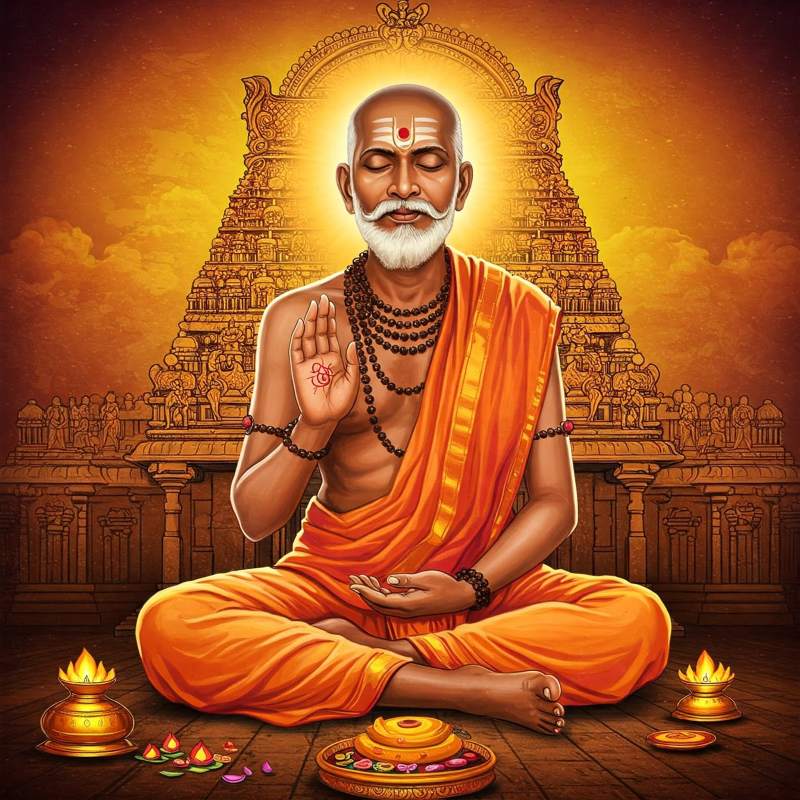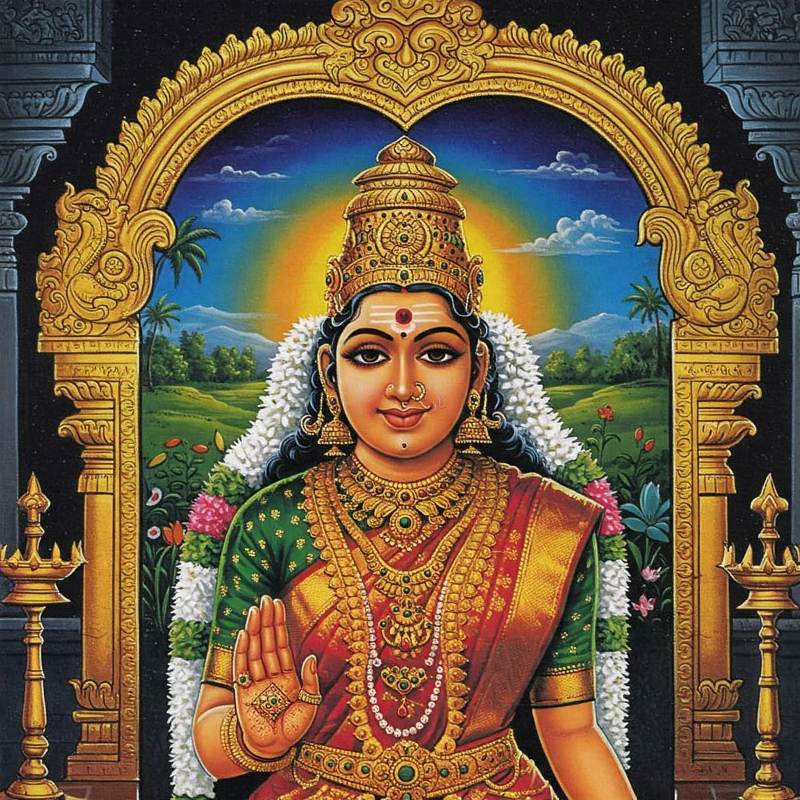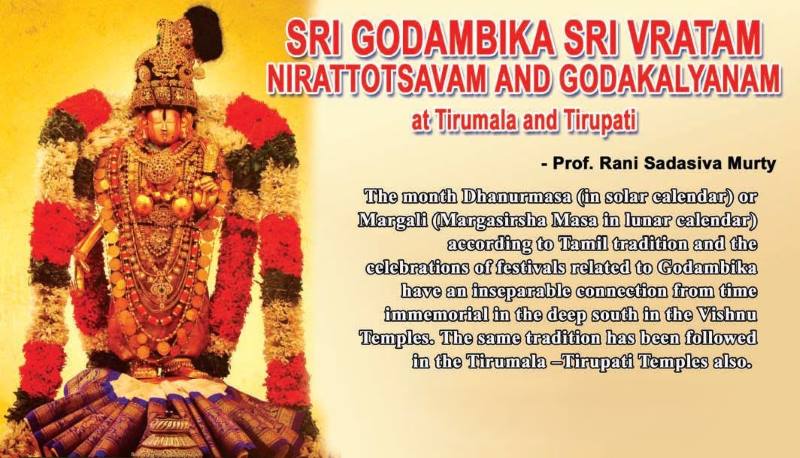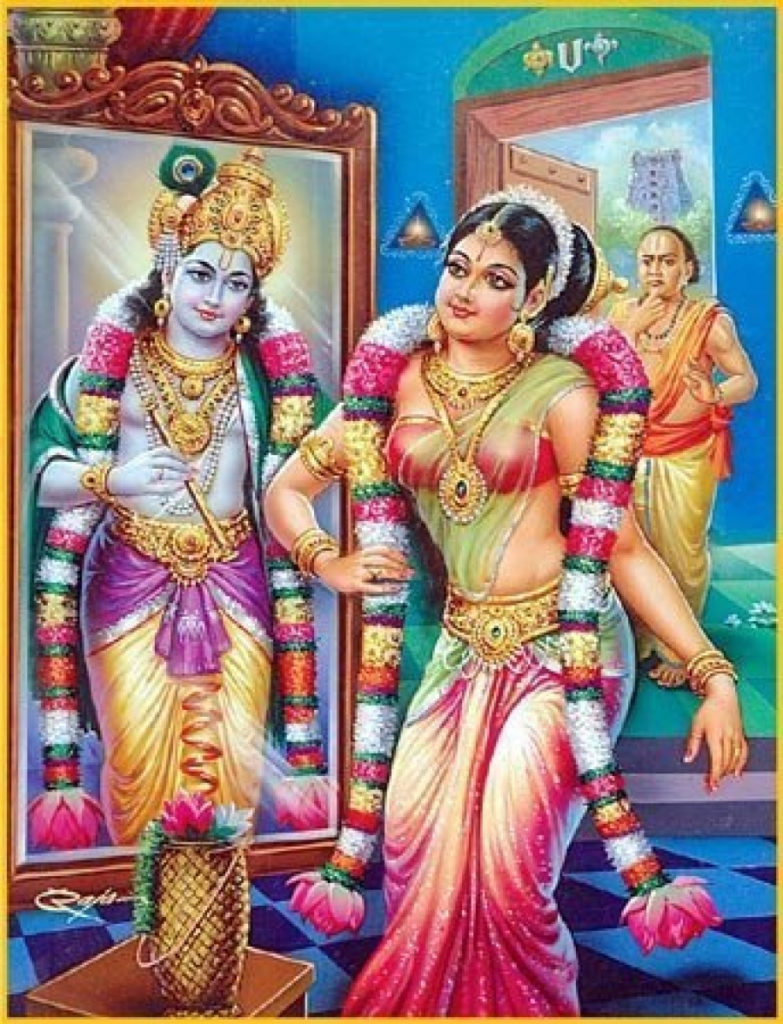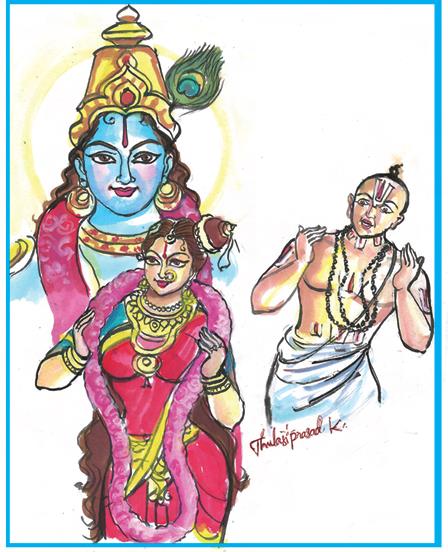Periya Alwar In all, we have 12 Alwars. Of them, two hail from Sri Villi Puttur. They are Vishnu Chitta and Andal, father and daughter. Vishnu Chitta is also called Periya Alwar. Among the Alwars, Vishnu Chitta has received high reverence. That is why he is also called as Periya Alwar. In Tamil, Periya means Read More
Tag: goda devi
The one and only female Alwar Andal who is otherwise known as Goda Devi, standing before the Chief Idol of Lord Venkateswara
Goda Devi’s Nachiyar Tirumoli
Goda Devi’s Nachiyar Tirumoli – Its Beauty and Significance Sri Goda Devi or Sri Andal is the incarnation of Mother Earth. She was found near the Tulasi plant at Srivilliputtur by Sri Vishnuchittar (Periyalvar). As described by Swamy Vedanta Desika in Goda Stuti, she is ‘Sri Vishnu Chitta Kula Nandana Kalpavalleem. She grew up hearing the ‘leelas’ Read More
Goda Devi’s Naachiyaar Thirumozhi
Goda Devi’s Naachiyaar Thirumozhi – It’s beauty and Significance Sri Goda Devi or Sri Andal is the incarnation of Mother Earth. She was found near the Tulasi plant at Srivilliputtur by Sri Vishnuchittar (Periyalvar). As described by Swamy Vedanta Desika in Goda Stuti, she is ‘Sri Vishnu Chitta Kula Nandana Kalpavalleem. She grew up hearing Read More
Purisai Garden Ceremony – Tiruvaadippooram Shaattumurai
Purisai Garden Ceremony On the day of Tiruvaadipuram Shaattumurai itself, Lord Venkateswara goes to Purisai Garden. On the evening of the day of Poorvaphalguni star in Kataka month, Sri Malayappa Swamy goes to Purisai Garden in a wooden Tiruchi in a wider circumambulation. There, different preparations are distributed to the devotees after offering them to Read More
Sri Godambika Sri Vratam Nirattotsavam
Sri Godambika Godambika or Goda Devi or Andal as popular in Tamil Vaishnava Tradition are the names of the same great person. Godambika was the only female of Vaishnava Dharma among the 12 alwars or azhwars. She was praised as the human incarnation of Goddess Bhudevi as a baby found in the Tulasi Garden at Read More
Goda Devi’s Marriage
On the day of Bhogi which is the last day of Dhanurmasa, the marriage of Goda Devi is celebrated. As soon as the Sun god enters Dhanushrasi, the month of Dhanurmasa commences. The Dhanurmasa remains up to Bhogi. In all temples of Vaishnavaites, the pasurams of the Divine known as TIRUPPAVAI are recited in the Read More
Story of Goda Devi (Andal)
Goda Devi – The Embodiment of Devotion Goda Devi (Andal), the Embodiment of love and devotion, prays to Lord Krishna: ‘O! Sri Krishna! You are my mother, father, friend, and relative. You are everything to me. All my bonds are only with you. Not just in this life, but in all lives, I wish to Read More
Dhanurmasam At Tirumala
Dhanurmasam ‘Dhanurmasa’ is considered as highly auspicious for the devotees of Lord Vishnu. The beginning of Dhanurmasa is marked by the transit of the Sun into ‘Dhanur ’ rasi. This is also called ‘Dhanus Sankramana’. According to Sanatana Dharma, Devas wake up early in the morning during this month. They perform special prayers to Sri Read More
